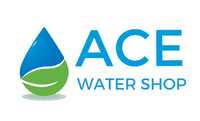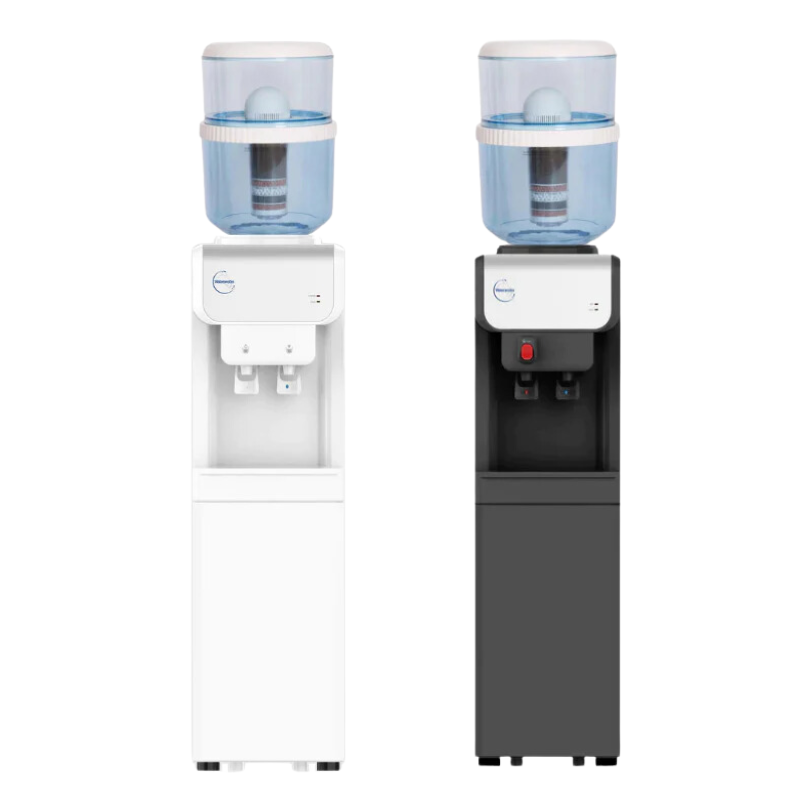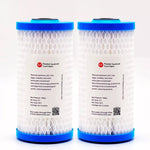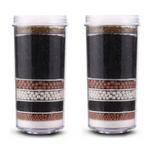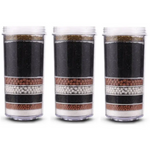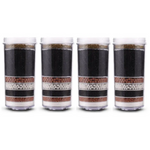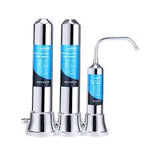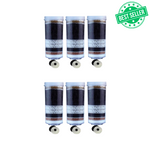You have no items in your shopping cart.
Charcoal filters or activated carbon filters contain microscopic carbon particles in the form of blocks or granules. These pieces go through treatment to make them extremely porous. A field's surface area (6400 sqm) equals 4 grams of activated carbon, perfect for water filtration. So, you're probably wondering why people favor activated charcoal for water purification.
Activated Charcoal
To begin with, charcoal adsorbs rather than absorbs pollutants. There is a significant distinction. While absorption occurs when particles dissolve into an absorbent's volume, adsorption occurs when substances attach to the surface of an adsorbent. They don't seep inside; instead, they get stuck on the adsorbent's character and can't get out. Sponges absorb liquids, while charcoal and gel adsorb them.
The potential of charcoal to purify material is best described as far back as several millennia when Egyptians used it to remove certain unwanted components in the manufacture of bronze.
The fact that charcoal has such a porous surface is why it is such an effective adsorber. Millions of pores separate its billions of carbon atoms. It essentially has a wide surface area for capturing and storing pollutants. Treating it with oxygen enhances its porousness further, and the surface is even larger. Activated charcoal, which your water purifier uses to clean water, is the outcome of this process.
Purifiers consist of an activated charcoal bed through which contaminated water passes to be purified. According to Wikipedia, a gram of activated charcoal in the bed has a surface area of over 32,000 square feet. To put things in perspective, a tablespoon of activated charcoal is about the size of a soccer field! Regardless of its amazing qualities, however, the degree of purification varies. It depends on how quickly the charcoal's exposure to water. The longer the water's exposure to impurities, the slower it travels through the bed.
Activated Charcoal For Water Purification
Many pollutants and chemicals are present in the tap water you consume, which can have long-term negative consequences on your health. As a result, we strongly suggest using activated carbon for water filtration. It sucks out hundreds of pollutants and impurities out of the water by activated carbon.
According to recent NSF and EPA studies, it can remove 60 to 80 pollutants, with 22 to 30 substances reduced.
Activated carbon's quality and form determine the effectiveness with which it removes pollutants and chemicals. According to an EPA report, activated carbon technology can remove all 32 identified organic pollutants, including THMs. The most prevalent 12 herbicides and 14 pesticides like glyphosate did not affect activated carbon.
Furthermore, whole-house filters, reverse osmosis (RO), UV filters, and various other filtration technologies use activated carbon or charcoal filters.

Activated Carbon Filter Sachet
Contaminants It Filters From Your Water
After you've finished reading it, you'll be aware of the advantages of using an activated carbon filter. The question now is, what chemicals and impurities will it be able to remove? Is it capable of filtering out every particle that might harm someone's health? The following are some of the contaminants and compounds it eliminates.
Pesticides
As most people are aware, pesticides are used in agriculture to keep pests from destroying crops. Pesticides find their way into freshwater sources like rivers, ponds, and groundwater. Despite treatment, it occasionally finds its way into tap water. As a result, it uses activated carbon to purify water. It can eliminate pesticides such as Chlordane, Chlordecone, Lindane, and others in up to 14 different ways.
Chlorine
Chlorine is mixed with water to make tap water safe. It may alter the smell and flavor of the water in a way that you do not prefer. You can use an activated carbon filter to remove this chemical. It's capable of removing 95% of chlorine from your tap water.
Chlorine bi-products
The most serious problem concerning tap water is chlorine bi-products. THMs and other bi-products are thought to be carcinogenic. When compared to other technologies for eliminating chlorine bi-products, activated carbon is the most effective. According to the EPA, it can remove up to 32 chlorine by-products.
Nitrate
You probably learned in high school that nitrate is essential for plants. Nitrogen is a crucial component of plant growth that is not toxic to people. However, when the amount is excessively high, it can cause complications such as Methemoglobinemia, caused by a lack of oxygen. When utilizing activated carbon for water purification, you may lower nitrate levels by 50-70 percent.
Microplastics
Microplastics have become a big problem in every country. These are tiny plastic pieces that contaminate freshwater sources. Because they're so little, they're impossible to notice with the naked eye. Plastic harms the human body in a variety of ways. As a result, it washes away all microplastics if you use an activated carbon filter.
Chloride
Chloride is a lifesaver in managing blood pressure, blood vacuum, and the pH balance of body liquids. It uses chlorine to eradicate dangerous viruses and bacteria during the chlorination process. Though it has no negative health consequences, it makes the water taste salty when used in large quantities. On the other hand, Activated carbon filters play a critical function in removing the salty taste from water. It can lower chlorine content by up to 50% to 70%.
PFOS
PFOS is a synthetic compound commonly used in metal plating, stain repellents, and firefighting foam. It has made its way into water resources and the environment through time. According to a study published in 2002, PFOS may be hazardous to mammalian species. As a result, activated carbon for water filtration, which efficiently eliminates PFOS, PFOA, PFNA, and PFAS, should be utilized to remove PFOS from tap water effectively.
Herbicides
Also known as weedkillers, herbicides are chemicals used to limit the growth of undesired plants like weeds. As you may be aware, the development of undesirable plants limits the amount of space, water, and minerals available to important plants like agricultural plants. It necessitates the removal of undesired vegetation. When you use activated carbon for filtering, it filters the most frequent 12 herbicides involving Atrazine and 2,4-D.
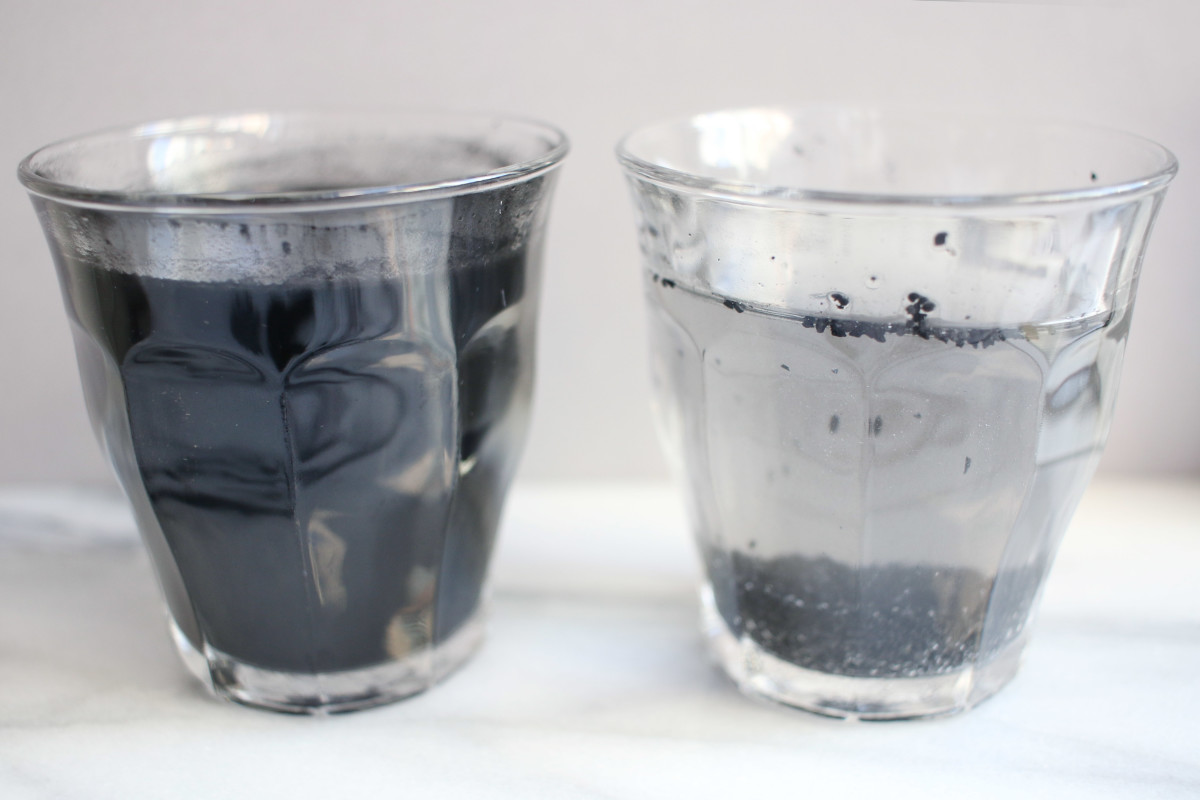
FINAL THOUGHTS: Activated Charcoal For Water Purification
We hope that now that you are aware of all the advantages of using activated charcoal for water purification, you will make an activated carbon filter your next purchase. It's a remarkable technique and substance frequently utilized in water filtration. In addition to filtering, it addresses several difficulties with tap water quality.
Get packs of activated carbon here at Ace Water Coolers Australia!
